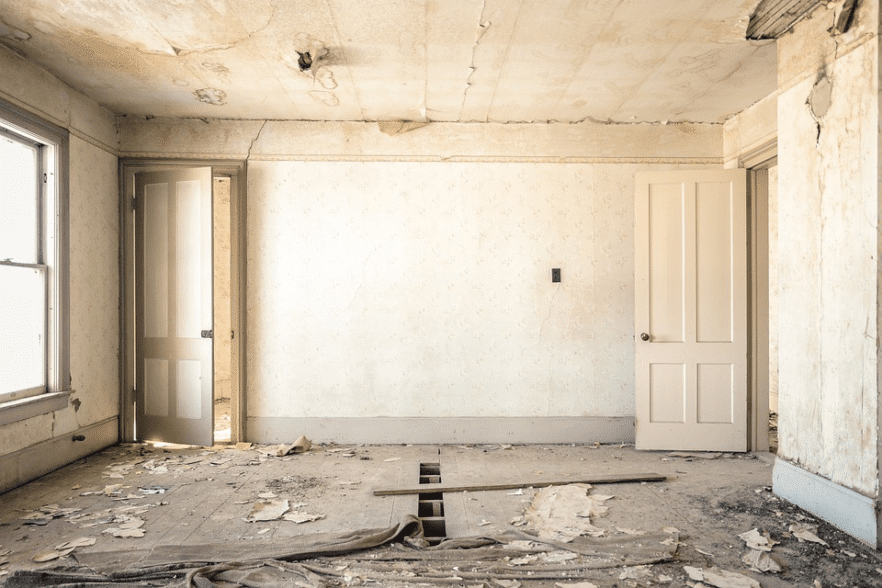When or if you decide to opt for a certain home renovation project, whether you want to add a new kitchen or add an entirely new room or two, you must have a plan in place. If you act without thinking, you may miss out on some crucial elements during the renovation process, like deciding on a particular pink color, what fittings and fixtures you need to change, and deciding what curtains to put up, among so many other things.
Fortunately, we did all the heavy lifting for you and have prepared a home remodeling checklist for you in the form of this article. This checklist will give you a good idea about the overall cost of a project, how long it’s going to take, and whether you can do something or perhaps everything on your own to avoid possible hidden fees and other unwanted surprises.
House Renovation Checklist
Make a Budget
By far, the essential aspect in this renovating-a-house-checklist is making sure that there’s enough money in your bank account to pay for a particular project, no matter how big or small it may be.
The costs of a particular project can vary depending on its size. So it’s best to prepare a list of the things that you want, need, and don’t need in a separate spreadsheet. After that, do a bit of fast research to determine the average cost of the items required for a project before tallying it to better understand what’s to come.
The toughest part about budgeting is figuring out the labor cost. Nevertheless, it’s assumed that labor accounts for 20 to 40% of the total budget. The budget must also include a contingency between 10 to 20% based on a project’s size and complexity.
It may seem like a lot to consider, but you have to give your project a safety net so that you’re left with some extra money on the side.
Determine End Goal
Besides budgeting, knowing your end goal is another thing to bear in mind in your renovations checklist. Are you renovating to extend your stay in your current home, or are you going to raise its value so you can sell it later on? If it’s the latter, then you must ensure that the neighborhood’s condition is friendly and safe. You also need to determine which renovations offer you a good return on your investment and which ones are not good.
Consult an Expert
Don’t take it too hard if you don’t know where to start. There’s no shame in consulting a professional contractor about your project or even having them analyze your home’s condition and structure. They’ll also let you know whether there are any safety issues that you need to be worried about. They’ll even give you a layout of the type of items you’ll need if you’re going to DIY your renovation project.
If you’re going to reach out to a professional, do so with someone, it was not only local but also reputed and experienced. That way, these professionals know about the exact processes around your area. You may need to get permission from the county or city building department and also factor in post-project inspections to ensure you’re staying up to code.
Whether you’re going to DIY your renovation project or not, you can monitor all the essential details regarding your project’s construction, no matter the scale using a remote construction workforce management software. Learn more here.
Establish a Timeline
Once you know what type of projects you want to pursue, you have to put together a rough timeline for those projects. Often, the most attractive timelines have plenty of electric buffers built into them. Of course, you don’t need to squeeze too much in a small time frame as eventually, things will add up that may, in turn, slow your contractor or you down.
However, the best time to put a timeline together is now as it’ll get you to establish your order of operations. For instance, if you’re doing an overall remodeling of your house, you need to go for the HVAC ducts first, and then the plumbing, the electric, and then everything else.
Should You Hire a General Contractor or DIY?
This is an extremely crucial factor to consider in your renovation checklist. Not everyone wants to employ a general contractor and wishes to be their own contractor instead. The idea seems tempting for homeowners who wish to save up on their hard-earned investment; however, it’s not always about money in the end.
Smaller projects can be DIY’d because they’re relatively more manageable and all for a simpler learning curve, especially if you’re a novice in home renovation. On the other hand, larger projects demand constant commitment and dedication that could last for months and require state-of-the-art heavy equipment and machinery, which realistically can only be handled and tackled by professional contractors.
Besides that, a general contractor is also in charge of managing a team of subcontractors, including electricians, AC technicians, painters, plumbers, and more, who operate within their schedules and contribute their skills and expertise. This is something that homeowners with no background of such are unable to handle.
Permits and Permissions
Small interior renovation projects normally don’t need any permit or permissions as long as you’re not changing part of the structure. However, it’s completely different when it comes to your house’s exterior. If you’re adding a new room, bathroom, or kitchen, you’ll need permission from the local housing authority, and to do that, you’ll need to submit elaborate architectural plans (sometimes in a variety of formats).
To learn about the zoning regulations in your community, you’ll first need to call the city building inspector and inquire about the kind of addition that you can build. You also need to ensure that a homeowners association in your community needs to be in the know.








